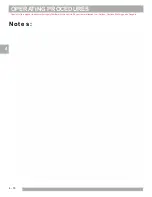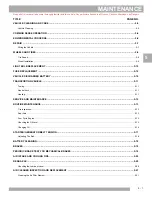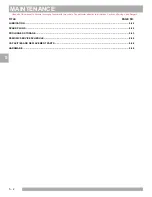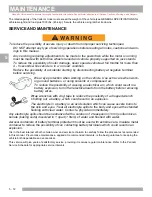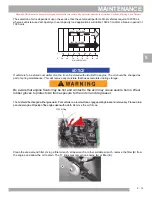
5 - 9
MAINTENANCE
Read all of this manual to become thoroughly familiar with this vehicle. Pay particular attention to all Notices, Cautions, Warnings, and Dangers.
5
Tire plug tools and plugs are available at most automotive parts outlets and have the advantage of not requiring the tire
be removed from the wheel.
If the tire is flat, remove the wheel and inflate the tire to the maximum recommended pressure for the tire. Immerse
the tire in water to locate the leak and mark with chalk. Insert tire plug in accordance with manufacturer’s instruc-
tions.
To reduce the possibility of severe injury, be sure the mounting/demounting machine is anchored
to floor. Wear OSHA approved safety equipment when mounting/demounting tires.
If the tire is to be removed or mounted, the tire changing machine manufacturer’s recommendations must be fol-
lowed in order to reduce possibility of severe injury.
Wheel Installation
To reduce the possibility of component damage, do not tighten lug nuts to
more than 85 ft. lbs. (115 Nm) torque.
It is important to follow the ‘cross sequence’ pattern when installing lug nuts. This
will assure even seating of the wheel against the hub.
With the valve stem to the outside, mount the wheel onto the hub with lug
nuts. Finger tighten the lug nuts (1) in a ‘cross sequence’ pattern. Tighten
the lug nuts to 50 to 85 ft. lbs. (68 to 115 Nm) torque in 20 ft. lbs. (27 Nm)
increments following the ‘cross sequence’ pattern.
Unidirectional Tires
Some vehicles may be fitted with unidirectional tires. These tires may be
identified by a directional arrow on the sidewall. Be sure to position the
wheel on hub correctly with arrow indicating direction of rotation when
moving forward.
NOTICE
Valve Stem Cap
Cross Sequence
Tire style may vary
NOTICE
Tire style may vary
1
2
3
4
'Cross Sequence'
Front of
Vehicle
Rota
tio
n






